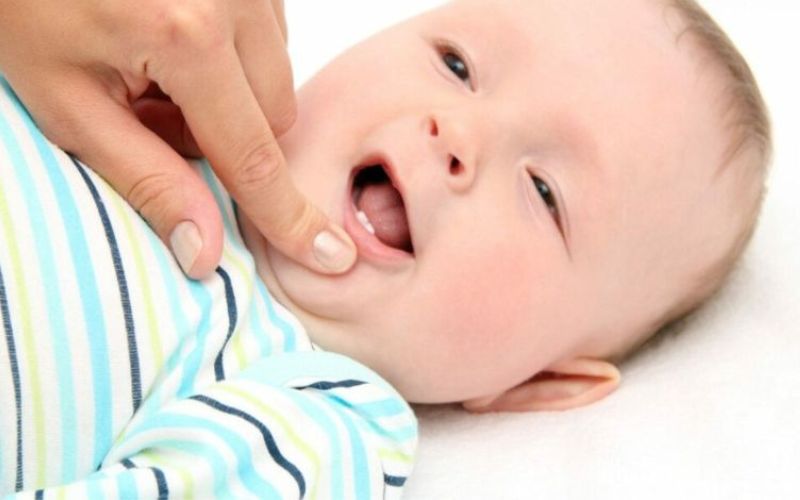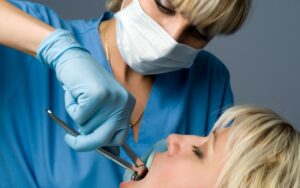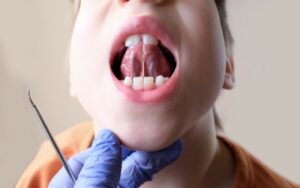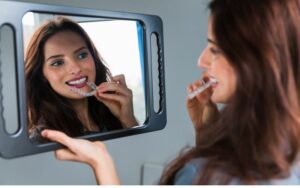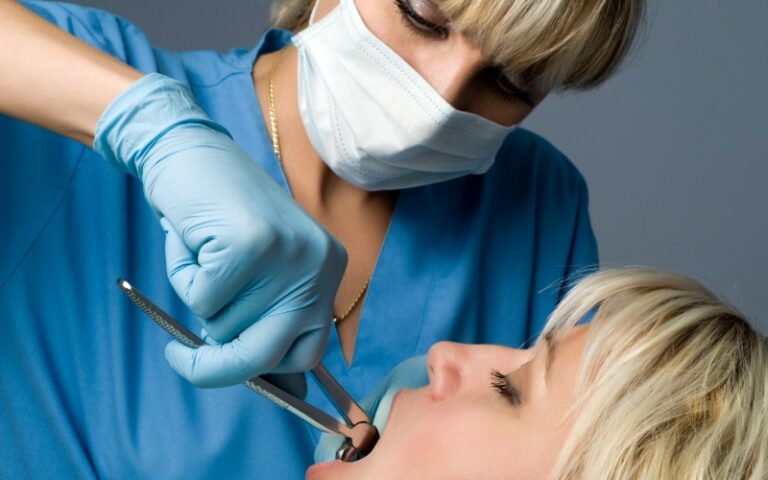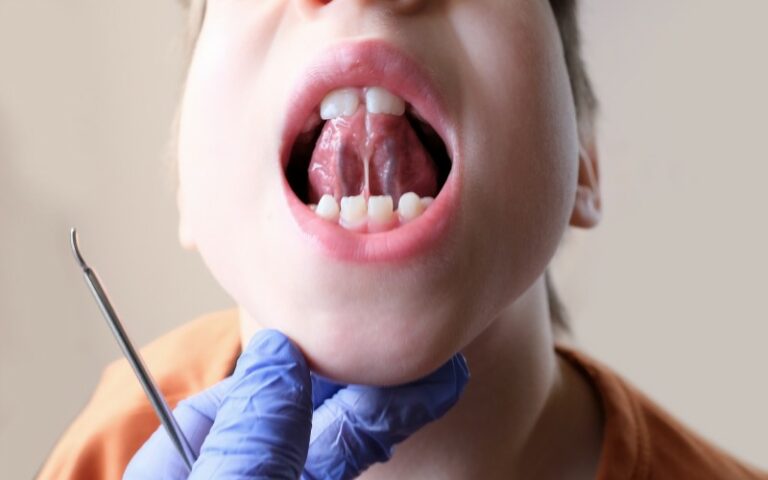Table of Contents
ToggleWhen Your Baby Starts Getting Teeth
Your baby’s first tooth may pop up anywhere from six to 12 months, and sometimes even later. Every baby can experience their first teething experience differently, but all of us parents can agree on one thing: they are cranky beyond belief!
What Is Teething?
Teething is when your baby gets their first set of baby teeth, often called milk teeth, that appear in pairs. Your baby is actually born with 20 teeth below their gums and between the ages of six to 12 months (sometimes later) hormones are released and cells in the gums die and separate, hence the teeth popping through. By the time they’re three, they should have all of their 20 primary teeth.
The order of appearance (emerging in pairs) is as follows:
-
Two: Lower central incisors between six to 12 months
-
Two: Upper central incisors between six to ten months
-
Two: Upper lateral incisors between ten to 16 months
-
Two: Lower lateral incisors between nine to 13 months
-
Four: First Molars between 13 to 19 months.
-
Four: Second Molars between 23 to 33 months
-
Four: Canines between 17 to 23 months
At age six, your child should start losing their baby teeth and by 12, the last baby tooth should have fallen out and will be replaced by 32 adult teeth. What?! teeth? Yes, sadly your baby is no longer a baby. They’re slowly turning into an adolescent. Someone grab the Kleenex!
What Are Signs Of Teething?
Common signs will include things like:
- Fussiness/irritability
- Crying
- Wanting to chew on harder toys or virtually anything
- Waking more often in the night
- Refusing to eat
- Coughing or gagging
- Drooling
- Rubbing their cheek
- Pulling their ear
- Swollen/sensitive gums
Individual teeth will typically only cause discomfort for a few days each, but it could longer for some babies as they all experience teething symptoms differently.
How To Ease Your Baby’s Teething Discomfort
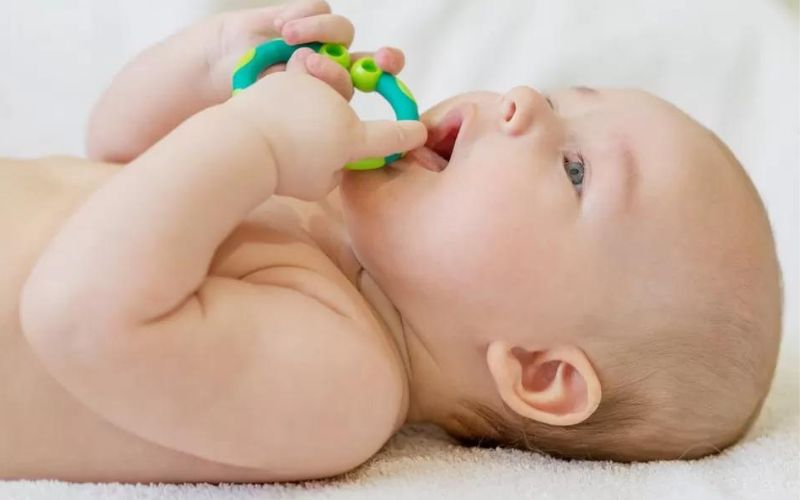
There are lots of things you can do for your baby as they go through their teething stage to ease pain, discomfort, and irritability.
Teething toys are a great comfort to your baby as they can chew it and be distracted by playing with it. The toy should be a bit harder and larger so it obviously can’t fit in their mouth and accidentally be swallowed.
Ensure the toy isn’t made with harmful chemicals either like BPA, Phthalates, latex, lead (paints or stains) or vinyl.
Non-toxic teething materials can include things like:
- 100% natural cotton
- 100% natural rubber
- Food-grade silicone
- Untreated natural wood
Another way to help relieve their pain is by giving them a cold washcloth to chew on. After wetting it, place it in the freezer for just a few minutes and then let them chew on it. You could also make homemade frozen lollipops (or just buy them if you don’t have time).
Yogurt-based frozen pops are perfectly fine but you may want to search for ones with no sugar or preservatives added. Coconut-milk based ones are good too and mix well with any flavour – watermelon, strawberry and banana, mango, etc.
If you have yogurt tubes, you could also just freeze those and let your baby suck on them when they’re being fussy. The coldness will soothe their pain and can reduce gum swelling.
When Should My Baby’s First Dental Visit Be?
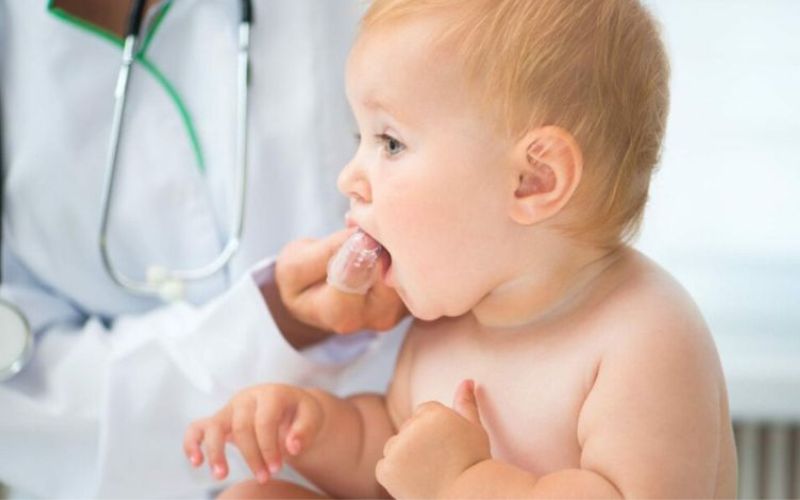
It’s best to start looking after your baby’s teeth as soon as they appear. Babies as young as nine months can develop cavities as they start eating more foods with sugars or acids that sit on their teeth. As soon as their first set of teeth appear, ask your dentist what the best way to go about cleaning their teeth would be and when you should start brushing, but regular checkups at the dentist should typically begin before their first birthday.
How To Clean Your Baby’s First Tooth
Aww, isn’t that first little set of teeth so cute? (except for the fact it’s keeping them up at night and can cause …discomfort… when you’re breastfeeding).
You can start brushing your baby’s teeth as soon as they poke through with a very small drop of toothpaste. You can also resort to using a washcloth or your finger if they’re fussy with a toothbrush. Don’t forget the tongue and gums!
Is Fluoride Safe For Babies? What Does It Do?
Just like it does for adults, fluoride keeps your baby’s teeth healthy and decreases their risk of decay. Fluoride binds with the minerals on the outside of our teeth and helps replace important missing minerals and makes our tooth enamel stronger as a result.
The stronger the tooth enamel, the less likely they’ll experience any dental issues. You should brush their teeth twice a day, once in the morning and once before bed.
Side note: As your baby falls asleep as they’re drinking their milk, the liquid gathers around and sits on the teeth and can cause cavities. This can also increase the chances of an ear infection.
Teething is an essential, albeit rather difficult, time for both baby and parent but there are lots of ways to help ease their discomfort and irritability. Shop around for BPA-free toys so they can chew on them, or make frozen lollipops for them to suck on to relieve pain and reduce any swelling.
You should start brushing their baby teeth as soon as they poke through, but scheduling regular dental visits isn’t as necessary until they’re one.
No matter your age, dental condition, and if you have a million questions, Dr. Sims can assist you or your young children in a professional manner and loves answering any of your questions or concerns. Dr. Sims grew up in Grimsby playing basketball, so he’s always up for talking about the Raptors! He’s also a football fan - go Buffalo Bills! In his free time, if he’s not watching a basketball game or football game, you’ll likely find him working out, cooking (got any new recipe ideas?), and of course, spending time with his amazing family.
- Tongue Tie Surgery: Medical or Dental? Your Complete Guide - February 28, 2024
- What to Eat After Tooth Extraction - January 16, 2024
- What Medical Professionals Treat Tongue Tie? - January 5, 2024

